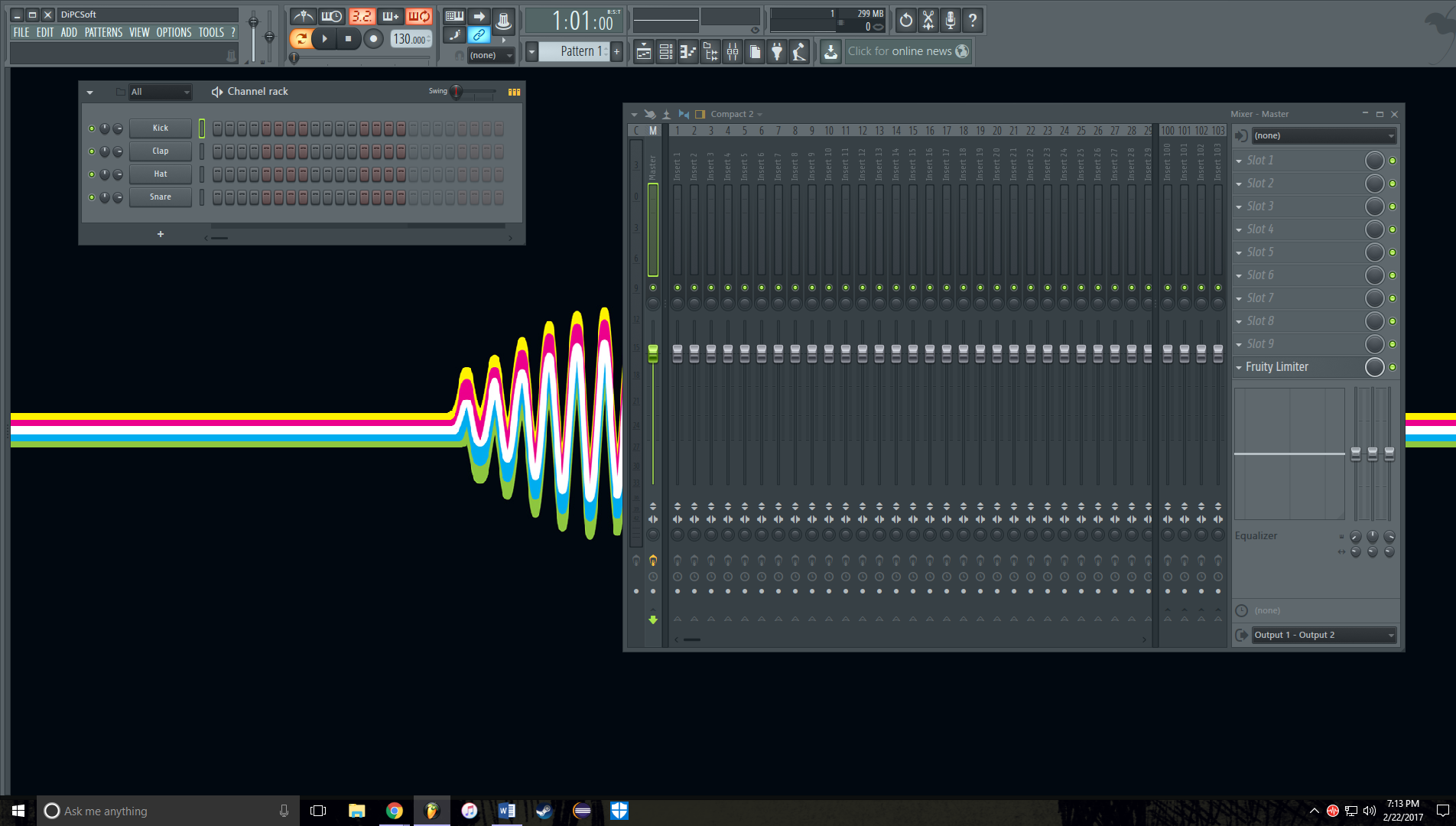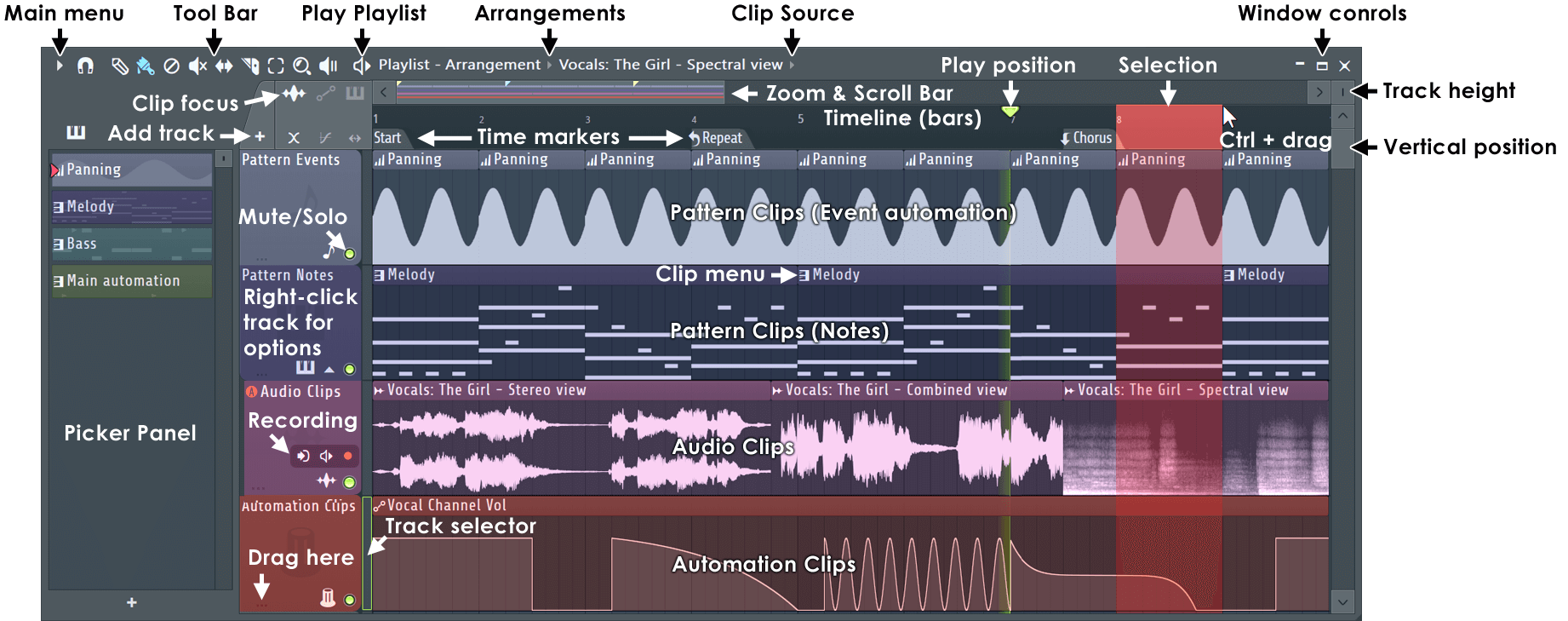

The Channel Rack is arguably the most important part of FL Studio, and it’s a large part of what distinguishes it from other DAWs on the market. By default when you open a new session, it’s loaded up with 4 pretty uninspiring stock sounds (pictured above: kick, clap, hat, and snare).

Any third-party plugins you add will show up here too.

The Plugin Database will show you all effect and generator (a fancy way of saying ‘instrument’ in FL Studio) plugins. The Current Project folder will show you all audio, automation clips, actions, and anything else done to the current project. This is useful for finding material you’ve got without having to sift through different windows. If you have folders of your own samples, you can easily add them to the Browser from File Settings under the Options menu. Under the Packs menu highlighted in blue you’ll find all of the samples included with whichever version of FL Studio you own. BrowserįL Studio’s Browser is where all the good stuff is stored: plugins, channel and mixer presets, folders to your own one-shots and loops, samples included with FL, and more. These are all very important, as they toggle open/closed the Arrangement, Piano Roll, Channel Rack, Mixer, and Browser windows. This determines the snapping/quantization value of the grids across the piano roll and arrangement.įurther moving right, just past where it says ‘Pattern 1,’ you’ll find more buttons. Underneath the main time counter, you’ll find a universal snap control represented by a horseshoe-shaped magnet (where it shows ‘1/4 beat’ in the screenshot above). These allow you to switch between playing back what’s in the Channel Rack (pattern) and what’s in the Arrangement (song).

To the right, nearing the center of the toolbar, you’ll find the transport section: play, stop, and record buttons, tempo, and more. You’ll also find two playback options: Pat (pattern) and Song. Just underneath the menus on the lefthand side of the toolbar is a dialogue box offering descriptions of items and buttons when your mouse hovers over them (in the screenshot it says ‘MaxwellMcAllister,’ representing who the owns the software license, as I had not scrolled the mouse over a button). Options is an important menu containing general, audio, and MIDI settings, plus a plugin manager and more. These all provide essential functions, and you should explore each of them to get comfortable with the layout. Main Toolbarįrom left to right, you’ll find standard menus including File, Edit, Options, and more. This makes it one of more customizable DAWs out there. The first thing you’ll want to understand about FL Studio is that all the windows (arrangement, mixer, channel rack, piano roll, etc.) can be moved around to your liking. Apart from the toolbar across the top of the screen, nothing in FL if fixed. When you open the software, it will probably look something like this:


 0 kommentar(er)
0 kommentar(er)
